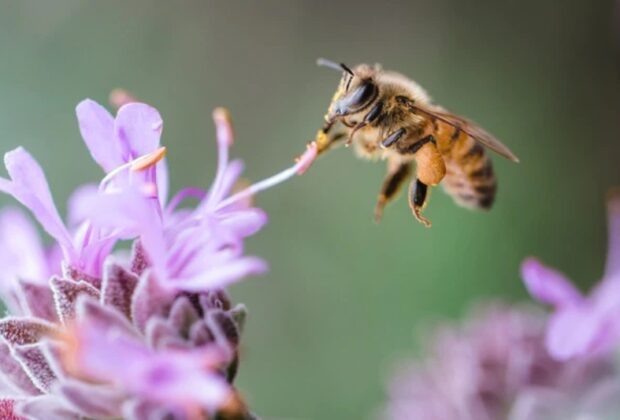Air pollution can cause a wide range of well-known harm. The chemicals created by human activity have the ability to alter the chemistry of the oceans, trap heat in the atmosphere, and negatively impact human health in several ways.
According to a recent study, pollinating insects may find flowers less appealing when there is air pollution around. Researchers found in Science on Thursday that substances known as nitrate radicals, which can be prevalent in nighttime urban air, significantly deteriorate the aroma that the pale evening primrose emits, decreasing the number of hawk moths that come.
Wide-ranging consequences could result from this sensory pollution, such as disrupting plant reproduction and lowering fruit output, which is a major source of food for many animals, including humans. It might also pose a hazard to pollinators, which are already in danger of going extinct worldwide and depend on flower nectar for survival.
The new study’s author and University of Washington atmospheric chemist Joel Thornton said, “We worry a lot about humans to air pollution, but there’s a whole life system out there that’s also exposed to the same pollutants.” “We’re really just uncovering how deep the impacts of air pollution go.”
Dr. Thornton, his collaborator Jeff Riffell, a University of Washington sensory neurobiologist and ecologist, and their joint doctorate student, Jeremy Chan, who is currently a researcher at the University of Naples, oversaw the project.
The pale evening primrose, a plant with tiny petals that open at night, is the subject of the study. Hawk moths, which have incredibly sensitive odor-detecting antennae, are one of its main pollinators. According to Dr. Riffell, “in terms of their chemical sensitivity, they’re as good as a dog.”
The fragrance of a flower is an intricate aroma made up of numerous chemical components. The scientists placed plastic bags over the blooms and collected samples of the fragrant air in order to identify the components of the distinctive primrose aroma. In the lab, the team’s analysis of these samples revealed 22 different chemical components.
After the moths were exposed to these fragrance compounds, the scientists observed the electrical activity of their antennae. It was discovered that the moths exhibited heightened sensitivity to a class of substances known as monoterpenes, which are also responsible for the evergreen, fresh scent of conifers.
The researchers created their own synthetic primrose scent using these alluring scents. They then introduced nitrate and ozone radicals, which are created when airborne contaminants from burning fossil fuels are released into the atmosphere. During the day, ozone is abundant because it generates in the presence of sunshine, while nitrate radicals, which are destroyed by sunlight, are more prevalent at night.
When the scientists introduced ozone to the primrose smell initially, they noticed considerable molecular deterioration, with two important monoterpene concentrations falling by about thirty percent. After that, they included nitrate radicals in the mixture, which turned out to be far more harmful, lowering the concentrations of these important moth attractants by up to 84 percent. Dr. Thornton claimed they were “almost completely gone.”
In order to evaluate the impact on two different species of hawk moths, the researchers placed a fake flower at one end of a wind tunnel that gave off the artificial aroma of primrose. A lot of the moths that were released at the other end ended up on the bloom.
However, the moths withered when the artificial flower released a scent that had been tainted by nitrate radicals. White-lined sphinx moths stopped visiting the bloom altogether, and tobacco hawk moths’ flower visitation rate decreased by 50%. The researchers discovered that adding ozone on its own had no impact on the behavior of the moths.
By planting artificial blooms in primrose plants, the scientists were able to duplicate similar findings in the wild. The researchers discovered that during the course of a night, hawk moth visits to flowers with a deteriorated perfume were 70% lower than those with an undamaged scent. They determined that drop would be sufficient to drastically diminish fruit yield by reducing primrose pollination. According to Dr. Riffell, “The chemical environment is playing a really profound role in shaping these ecological communities,”
The issue, according to the experts, goes far beyond the primrose and hawk moth. Monoterpenes, which are frequently found in floral scents, can cause sensitivity in many pollinators. Through the use of computational modeling, the researchers determined that during the preindustrial era, pollution has decreased scent-detection distances by more than 75% in numerous cities worldwide.







